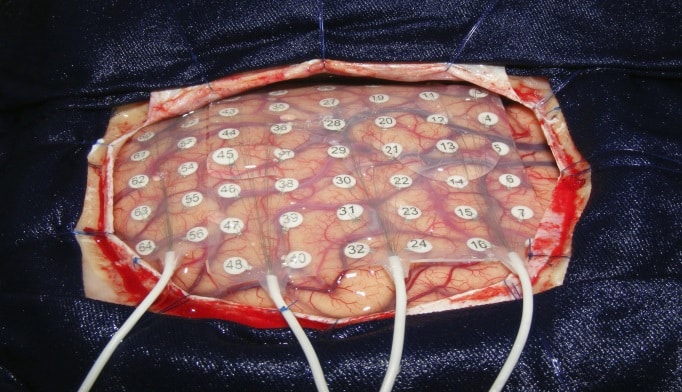Epilepsy is a disorder in which nerve cell activity in the brain is disturbed, causing seizures. Epileptic seizures are episodes that can vary from brief periods to long periods of vigorous shaking which can result in physical injuries.
If you are asking the question, “can surgery fix epilepsy”, you must have considered the first line of treatment for epilepsy which involves antiepileptic drugs. The drugs are anticonvulsive and most patients will respond positively to one or two different trials. This treatment aims to eliminate seizures. However, the medication is not effective in some people with epilepsy and could cause severe side effects. In such people, epilepsy surgery may be indicated.
Epilepsy surgery involves a neurosurgical procedure where an area of the brain involved in seizures is either resected, i.e removed or disconnected. The goal, as with antiepileptic drugs is to eliminate seizures as poorly controlled seizures can result in dire complications such as:
– Physical injuries, including broken bones
– Drowning
– Depression and anxiety
– Suicide
– Sudden death
Evaluation for Epilepsy Surgery
This involves a series of diagnostic tests designed to locate the epileptic focus, i.e the area of the epileptic abnormality and to determine if the respective surgery will be effective. The evaluation usually involves:
– Routine EEG: Electroencephalography (EEG) is an electrophysiological monitoring method to record the electrical activity of the brain.
– Neuropsychological evaluation: This involves studying the behavioral modification related to the condition.
– Neuroimaging: This involves taking images of the brain structure using techniques such as MRI (magnetic resonance imaging).
These tests are required to understand the nature and cause of the seizures and to be able to answer the question, “Can surgery fix epilepsy?”.
Once the epilepsy focus is located, the specific surgery involved in treatment is decided on. The type of surgery depends on the location of the seizure focal point.

Types of Epilepsy Surgery
Several epilepsy surgeries are depending on the location of the epilepsy focal point. They include:
1. Hemispherectomy
Hemispherectomy involves removal or disconnection of most, or all of, one half of the brain typically leaving the basal ganglia and thalamus.
Due to the radical nature of the procedure, it is reserved for people with the most catastrophic epilepsies, such as those due to Rasmussen’s encephalitis.
If the surgery is performed on very young patients (2–5 years old), then the remaining hemisphere may acquire some motor control of the other side of the body; in older patients, paralysis results on the side of the body opposite to the part of the brain that was removed with less prospect for recovery.
A visual field defect is an unavoidable side effect, typically involving homonymous hemianopia involving loss of half of the visual field on the same side of the disconnected brain. Because of these and other side-effects, it is usually reserved for patients having exhausted other treatment options.
2. Temporal lobe resection
Temporal lobe resection acts as a treatment option for patients with temporal lobe epilepsy, or those whose seizure focus is in the temporal lobe. Temporal lobe seizures are the most common type of seizures for teens and young adults. The procedure involves resecting or cutting away, brain tissue within the region of the temporal lobe to remove the seizure focus.
The surgery has produced successful outcomes, controlling seizures in 65 percent of temporal lobe epilepsy patients. Follow-up studies suggest that the procedure also has produced positive long-term effects that illustrate 63 percent of patients remaining seizure-free.
Although the procedure produces positive outcomes for patients regarding seizure control, the surgery can also produce negative outcomes such as memory impairment. Impairment depends on the hemisphere of resection; temporal lobe resection of the left hemisphere often causes verbal memory impairment while temporal lobe resection of the right hemisphere often causes visual memory impairment
3. Extratemporal lobe resection
Extratemporal lobe resection acts as a treatment option for patients with extratemporal epilepsy, or epilepsy patients whose seizure focus is outside of the temporal lobe, and stems from the occipital lobes, parietal lobe, frontal lobe, or in multiple lobes. The outcomes of the procedure are high with 67 percent seizure freedom after surgery.
4. Corpus callosotomy
This is a surgical procedure carried out to sever — completely or partially — the bundle of nerves connecting the right and left sides of the brain (corpus callosum). This is usually used with children who experience abnormal brain activity that spreads from one side of the brain to the other.
5. Lesionectomy
Removing a lesion that causes focal seizures is called a laminectomy. People with a focal (well-defined) structural abnormality in the brain causing their seizures, such as a tumor or vascular malformation (abnormal blood vessel group), may be considered for this type of surgery. This operation involves removing the lesion and the area of surrounding brain tissue that is causing seizures.
More: History of Surgery
Epilepsy Surgery Outcomes
The outcomes of epilepsy surgery vary depending on the type of surgery performed. The expected outcome is seizure control with medication.
The most common and best-understood procedure — resection of tissue in the temporal lobe — results in seizure-free outcomes for about two-thirds of people. Studies suggest that if you do not have a seizure in the first year after temporal lobe surgery — with medication — the likelihood of being seizure-free at two years is 87 to 90 percent. If you have not had a seizure in two years, the likelihood of being seizure-free is 95 percent at 5 years, 82 percent at 10 years.
Epilepsy Surgery Cost
A bulk of epilepsy surgery costs is associated with the prerequisite evaluations which involve a series of diagnostic tests. Considering the costs for epilepsy surgery evaluation and surgery in the whole patient series, the average total cost of rendering one patient seizure-free with surgery is about the US $110,000.
We hope we have been able to answer your question, “Can surgery fix epilepsy”. Feel free to drop your thoughts in the comments section.
More: Jaw Reduction Surgery


